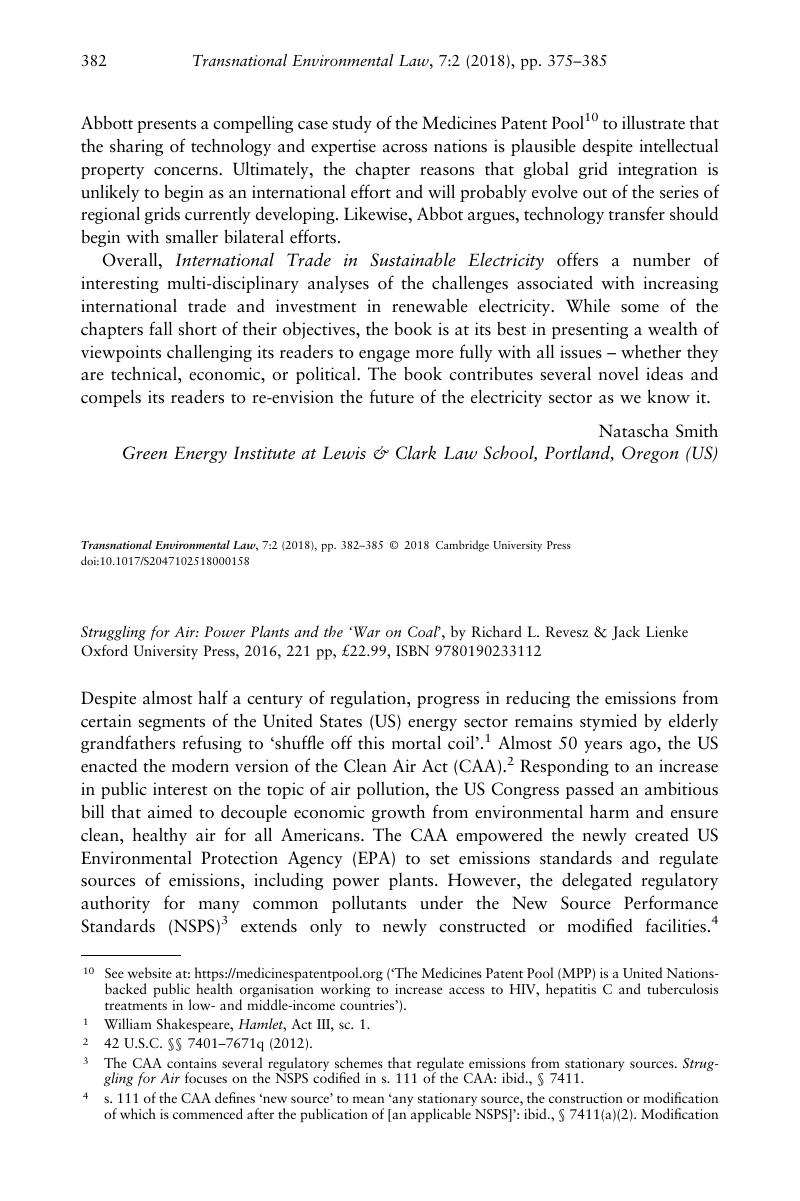No CrossRef data available.
Published online by Cambridge University Press: 06 July 2018

1 William Shakespeare, Hamlet, Act III, sc. 1.
2 42 U.S.C. §§ 7401–7671q (2012).
3 The CAA contains several regulatory schemes that regulate emissions from stationary sources. Struggling for Air focuses on the NSPS codified in s. 111 of the CAA: ibid., § 7411.
4 s. 111 of the CAA defines ‘new source’ to mean ‘any stationary source, the construction or modification of which is commenced after the publication of [an applicable NSPS]’: ibid., § 7411(a)(2). Modification is subsequently defined as ‘any physical change in, or change in the method of operation of, a stationary source which increases the amount of any air pollutant emitted by such source or which results in the emission of any air pollutant not previously emitted’: ibid., § 7411(a)(4).
5 Pub. L. No. 91-604, 84 Stat. 1676.
6 Particulate matter, ground-level ozone, carbon monoxide, lead, sulphur dioxide, and nitrogen dioxide are currently regulated as criteria pollutants.
7 Because a taller stack does not increase the amount of emissions from a plant, this type of physical change does not count as a modification under the NSPS.
8 William Shakespeare, Macbeth, Act V, sc. 5.